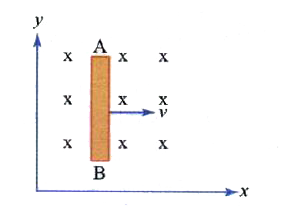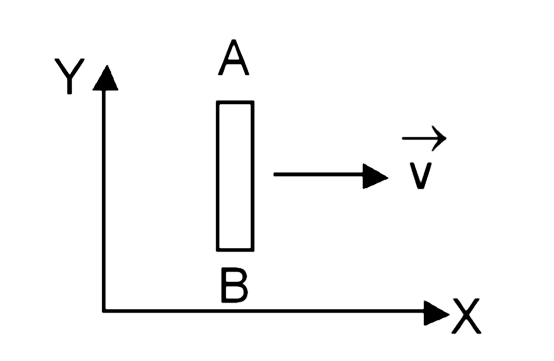A cube of edge a has its edges parallel to x, y and z axis of rectangular coordinate system. A uniform electric field E is parallel to y-axis and a uniform magnetic field B parallel to x axis. The rate at which energy flows through each face of the cube is
a2EB2μ0 parallel to x-y plane and zero in other
a2EBμ0 parallel to x-y plane and zero in other
a2EB2μ0 from all faces
a2EB2μ0 parallel to y-z faces and zero in other
The correct Answer is:B
Energy flowing per second per unit area from a face =1μ0(→E×→B). In negative Z direction i.e. Energy will be flowing in faces parallel to x-y plane and is zero in all other phases. Total energy flowing per second from a face is =1μ0(EBsin90)a2=EBa2μ0
Similar Questions
A cube of edge a has its edges parallel to X, Y and Z -axis of rectangular coordinate system. A uniform electric held E is parallel to Y-axis and uniform magnetic field B parallel to x axis. The rate at which energy flows through each face of the cube is
View SolutionEquation of line parallel to X-axis and Y-axis
View Solution
Knowledge Check
A conducting rod AB moves parallel to x-axis in a uniform magnetic field pointing perpendicular and into the plane of paper. The end A of the rod
 Agets positively chargedBgets negatively chargedCremains neutralDgets positively charged first and then negatively charged
Agets positively chargedBgets negatively chargedCremains neutralDgets positively charged first and then negatively chargedA conductor rod AB moves parallel to X-axis in a uniform magnetic field, pointing in the positive Z-direction. The end A of the rod gets-
 Apositively chargedBnegatively chargedCneutralDfirst positively charged and then negatively charged.
Apositively chargedBnegatively chargedCneutralDfirst positively charged and then negatively charged.The electric flux through a hemispherical surface of radius R placed in a uniform electric field E parallel to the axis of the circular plane is
A(2πR)EB(πR2)EC(43πR3)ED(23πR3)E
Equations of Lines Parallel to the X-axis and Y-axis
View SolutionA conductor rod AB moves parallel to X-axis in a uniform magnetic field, pointing in the positive Z-direction. The end A of the rod gets-

View SolutionEquipotential surfaces associated with a uniform electric field along positive x-axis are planes parallel to
View SolutionFind the equation of the line through (2,3) which is (i) parallel to the x-axis and (ii) parallel to the y-axis.
View SolutionEquipotential surfaces associated with a uniform electric field along positive x-axis are planes parallel to
View Solution
